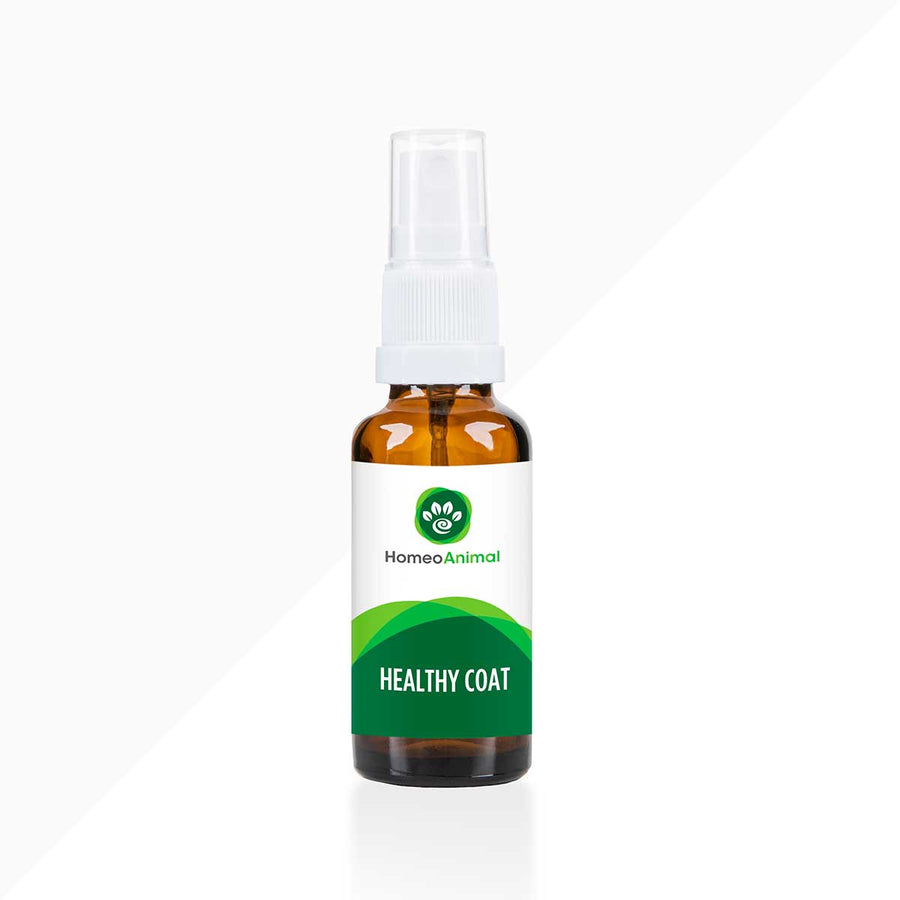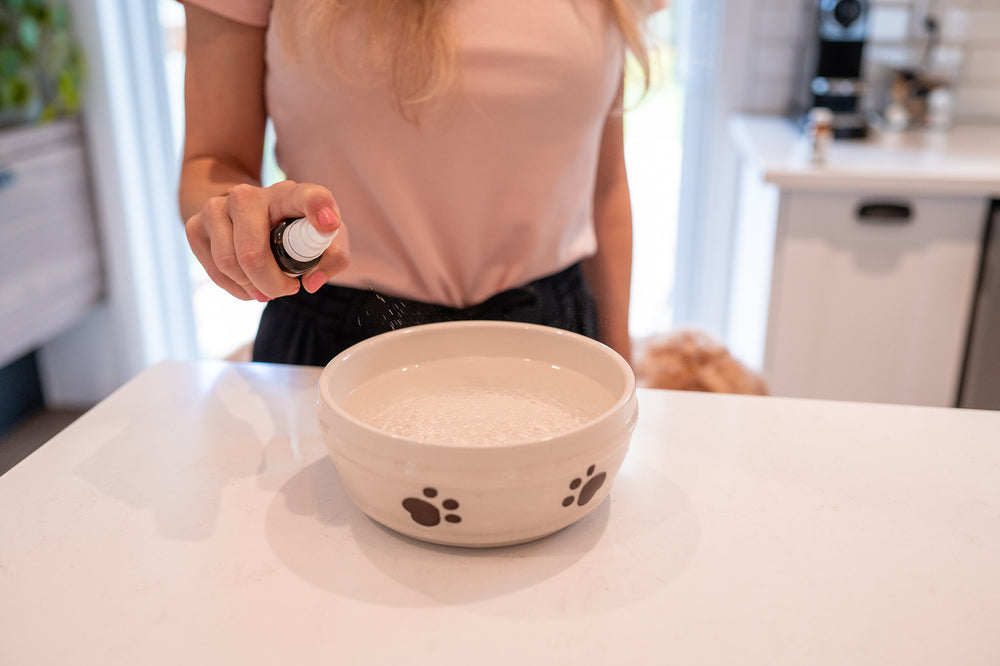Expert Insights: Say Goodbye to Excess Fur — Your Guide to Dog Shedding
Shedding is a common (and sometimes frustrating) part of dog ownership that nearly every pet parent encounters. It's also a natural and necessary process that helps dogs replace old, damaged, or loose hair to maintain a healthy coat.
The amount of shedding varies widely depending on your dog’s breed, coat type, and the time of year. Seasonal changes often trigger increased shedding, especially in double-coated breeds.
While it is impossible to stop shedding, there are steps you can take to manage it and keep your dog's hair in the best possible condition. This article is also aimed at helping you recognize the symptoms of an underlying health condition that excessive shedding may imply.
Understanding Why Dogs Shed and What Triggers It

Dog shedding is a natural result of the hair growth cycle, which includes the anagen (growth), catagen (transition), and telogen (resting) phases. As old hairs reach the end of their cycle and fall out, new ones grow in, keeping your dog’s coat healthy and renewed.
Shedding allows dogs to naturally eliminate dead or damaged hair, making way for healthy new growth. This process helps maintain a clean, insulated, functional coat throughout the year.
Seasonal shedding is common in many dogs, particularly double-coated breeds, as they adjust to warmer or cooler weather in spring and fall. In contrast, indoor dogs often shed steadily year-round because they're less exposed to natural seasonal triggers.
Why Some Dogs Shed More: Key Influencing Factors
A dog’s breed and coat type are major factors in how much it sheds, with double-coated breeds often shedding heavily during seasonal changes. It's important to note that hair length doesn’t determine shedding. Some short-haired dogs can shed just as much as long-haired ones.
Seasonal shedding
Seasonal changes in temperature and sunlight act as natural signals that trigger a dog’s shedding cycle. As daylight increases or decreases, especially in spring and fall, many dogs shed to adjust their coats for the upcoming weather conditions.
Diet and hydration
A dog’s diet and hydration play a crucial role in coat health, as poor nutrition or dehydration can weaken hair follicles and increase shedding. Meals rich in essential nutrients help support healthy skin and reduce excessive hair loss.
Stress levels
Stress can trigger excessive shedding in dogs as part of the body’s natural response to anxiety or environmental changes. Common stressors like travel, loud noises, or routine disruptions may cause temporary but noticeable hair loss.
Underlying health issues
Excessive or abnormal shedding can indicate underlying health issues such as allergies, hormonal imbalances, or skin infections. If your dog’s shedding suddenly increases or is accompanied by bald spots or irritation, it’s best to consult a veterinarian or a pet homeopathy specialist.
Dog Breeds and Shedding: Key Differences Explained
Before we move on, there's just one thing to emphasize. The term "hypoallergenic" doesn’t mean a dog won’t shed. It refers to breeds that typically produce less dander, a common allergen. While these dogs may shed less, no breed is completely allergen-free.
Breeds like the Afghan Hound, Bichon Frise, Poodle, and Portuguese Water Dog are known for lower shedding and are often recommended for allergy sufferers or tidy households. While many “doodle” mixes may shed less, their coats can vary, so minimal shedding isn’t always guaranteed.
High-shedding breeds such as the Labrador Retriever, German Shepherd, and Siberian Husky can leave a noticeable trail of fur, especially during peak shedding seasons. Surprisingly, even short-coated dogs can be prolific shedders, making regular grooming essential regardless of coat length.
6 Proven Ways to Minimize Dog Shedding at Home

Noticing excessive shedding? Before turning to conventional treatments, try these simple, effective home remedies to help manage your dog’s coat naturally:
#1. Brush often to help control shedding
Brushing your dog regularly is the best way to catch loose hair before it covers your floors and furniture. Frequency depends on your dog’s breed and coat type, but routine grooming keeps shedding under control and promotes a healthier coat.
- Short-haired dogs: Brush once a week to remove loose hair and keep their coat healthy.
- Medium-haired dogs: Brush two to three times a week to prevent tangles and control shedding.
- Long-haired dogs: Brush daily or every other day to avoid matting and maintain coat health.
- Double-coated dogs: Brush two to three times a week, and increase to daily during shedding seasons to manage undercoat buildup.
#2. Choose grooming tools that work for your dog’s coat.
Using the right grooming tools makes a big difference in managing shedding and maintaining coat health. Bristle brushes work for most coat types, wire-pin brushes are ideal for curly or woolly fur, slicker brushes tackle mats and tangles, and rubber curry combs are perfect for short-haired breeds while offering a gentle massage.
Shedding tools and undercoat rakes are especially effective during seasonal shedding, helping to remove loose, dead hair from the undercoat. Use these tools gently to avoid irritating or scratching your dog’s skin, especially on sensitive areas.
#3. Don’t overlook the role of bathing and shampoos in reducing shedding.
Regular bathing keeps your dog’s coat healthy and helps remove loose, dead hair. Deshedding shampoos and conditioners for dogs moisturize the skin and reduce excess fur, but thorough rinsing is essential to prevent residue buildup.
- Short-haired dogs: Bathe every 2 to 3 months, or as needed if they become dirty or develop odor.
- Medium-haired dogs: Bathe every 4 to 6 weeks to keep their coat clean and manageable.
- Long-haired dogs: Bathe every 4 to 6 weeks to prevent tangles and maintain coat health.
- Double-coated dogs: Bathe every 6 to 8 weeks. Avoid over-bathing, as it can strip natural oils and disrupt the undercoat’s health.
#4. Improve your dog’s diet and hydration for better coat health.
Feeding your dog a balanced, high-quality diet is essential for healthy skin and a strong, glossy coat. Omega-3 fatty acid supplements can further support coat health and reduce shedding, but consult your veterinarian or pet nutritionist before adding them.
#5. Protect your dog from parasites to help prevent skin irritation and excessive shedding.
Parasite control is essential, as fleas, ticks, and mites can trigger intense itching and lead to excessive shedding. Regular use of veterinarian-approved preventatives helps protect your dog’s skin and coat while minimizing hair loss caused by irritation. Using premium natural products like FLEA-DERM can also help.
#6. Enhance your dog care routine with premium natural products that support healthy skin and coat.
Looking for a natural solution to your dog’s shedding? Zumalka’s FUR HAPPY - OPTIMAL is a great option to consider. This kit includes:
- FUR HAPPY is a natural product that helps support the health of the skin and coat. It is beneficial for pets experiencing occasional dryness, irritation, or thinning of the coat.
- TONICPET #4 is a homeopathic mineral support that contributes to the maintenance of healthy circulation, which plays a role in overall skin and coat wellness.
- TONICPET #7 provides homeopathic support for tissue health, helping to maintain the natural integrity of the skin and coat.
- TONICPET #9 is used to help support skin hydration and may assist in maintaining a soft, healthy-looking coat.
- TONICPET #12 offers homeopathic mineral support that contributes to the strength and appearance of the coat as part of overall pet wellness.
- SILI-MER G5 is a silica-based supplement formulated to support healthy connective tissue, which includes the skin and coat. It may be used on an ongoing basis to help maintain normal coat condition.
Is Your Dog’s Shedding Normal? When to Contact a Vet
While shedding is a normal part of a dog’s life, a sudden increase or change in its patterns can be a red flag. Unusual hair loss may indicate underlying health issues, so it’s best to consult your veterinarian if you notice anything out of the ordinary.
Here are the specific indicators you should watch for:
- Unusual hair loss: Noticeably more shedding than normal, not related to seasonal changes.
- Behavioral or physical changes: Increased thirst, urination, weight fluctuation, or shifts in behavior.
- Constant itching or grooming: Excessive scratching, licking, or chewing may signal discomfort or irritation.
- Skin irritation: Red, inflamed, dry, flaky, or discolored skin can indicate allergies or infections.
- Patchy or symmetrical hair loss: Bald spots or even hair thinning could point to hormonal or autoimmune issues.
- Dull or brittle coat: Fur that lacks shine or breaks easily may reflect poor nutrition or internal health problems.
- Visible parasites: Fleas, ticks, or mites seen on the skin or fur require immediate attention.
Consulting a veterinarian is the best way to diagnose and treat underlying medical conditions. If you're interested in a more natural approach, a qualified pet homeopathy specialist may offer additional support.
Why Regular Grooming is Crucial

Grooming does more than maintain your dog’s coat. It strengthens the bond between you. These one-on-one moments build trust and contribute to your dog’s emotional and physical health.
Moreover, regular grooming doubles as a routine health check for your dog. It’s the perfect time to spot lumps, bumps, parasites, cuts, or skin issues before they become serious problems.
Here’s the best part: regular grooming isn’t just about appearance. It promotes a healthier, happier dog by supporting skin, coat, and overall wellness. Plus, it helps control shedding, keeping your home cleaner and more comfortable.
Key Takeaways
While shedding is a natural part of your dog’s life, it can be managed with the right care. Regular grooming helps control loose fur, keeping your dog comfortable and your home noticeably cleaner.
Proactive grooming, like regular brushing and bathing, helps minimize shedding at the source. Pair it with a nutritious diet and proper hydration to keep your dog’s coat healthy and shedding under control.
Understanding your dog’s normal shedding pattern is key to spotting potential health issues early. If shedding seems excessive or abnormal, consult your veterinarian or a qualified pet homeopathy specialist for expert advice.
FAQs
What is shedding in dogs?
Shedding in dogs is a normal process where old or damaged hair falls out to allow new growth. While shedding levels vary by breed and season, regular grooming helps manage it and maintain coat health.
How do I get my dog to stop shedding?
You can’t stop shedding entirely, but regular brushing, bathing, a balanced diet, and proper hydration help reduce it. These habits promote a healthier coat and minimize loose hair around your home.
What month do dogs shed the most?
Dogs typically shed the most during spring and fall. These seasonal changes trigger coat transitions, shedding winter fur in spring and summer fur in fall, to help regulate body temperature as the weather shifts.
What triggers a dog to start shedding?
Shedding in dogs is triggered by seasonal changes, temperature shifts, hormones, and overall health. Stress, poor diet, or medical issues can also increase shedding, making regular grooming and veterinary or pet homeopathy care essential.
What can I give my dog for shedding?
Reduce shedding by feeding your dog a balanced diet with omega-3 fatty acids, maintaining regular grooming, and ensuring proper hydration. Supplements like fish oil can further support skin health and coat quality. Homeopathy products like our FUR HAPPY KIT are also a good addition
Is shedding painful for dogs?
Shedding is a natural and painless process for dogs. However, excessive shedding or hair loss accompanied by itching or skin irritation may indicate an underlying issue that requires veterinary or pet homeopathic attention.
Should you bathe a shedding dog?
Bathing a shedding dog helps loosen and remove excess fur, making coat maintenance easier. Use a mild, shed-control shampoo and follow up with thorough brushing to promote healthy skin and a shiny coat.
Do dogs get sick when shedding?
Dogs don’t get sick from normal shedding. However, excessive hair loss can sometimes signal underlying health issues like allergies, parasites, or hormonal imbalances. This is why it’s important to monitor symptoms and consult a veterinarian or a qualified pet homeopath if needed.
When to worry about dog shedding?
Be concerned about shedding if it becomes excessive, happens out of season, or comes with bald spots, itching, or skin irritation. These symptoms may signal an underlying issue. Consult a veterinarian or pet homeopathy expert for guidance.
Can I stop my dog from shedding?
You can’t completely stop shedding, but you can control it with regular grooming, a nutritious diet, adequate hydration, and the right supplements. These practices promote a healthy coat and reduce excess hair at home.
How much shedding is too much?
If your dog’s shedding becomes excessive or sudden, especially with bald spots, skin issues, or behavior changes, it could indicate a health problem. Consult your veterinarian or a certified pet homeopathy expert for evaluation.
What dog sheds the most?
Breeds like the Akita, Alaskan Malamute, German Shepherd, and Siberian Husky are known to shed heavily. These double-coated dogs experience seasonal "blowouts" and require consistent grooming to manage excessive fur.








Leave a comment